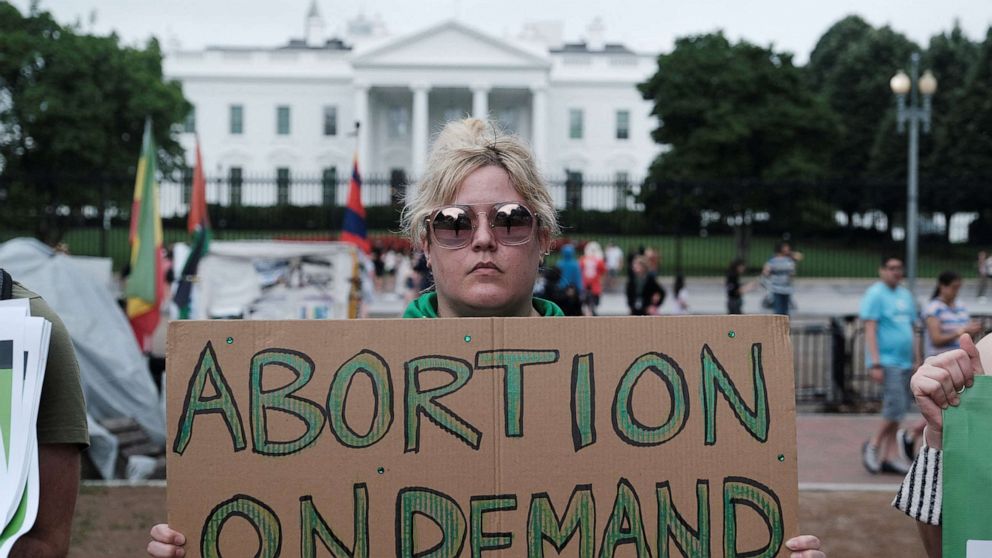The nonsensical idea of a natural right
At this writing, the U.S. Supreme Court has removed a constitutional right: the right of a woman to to have an abortion in the first trimester of her pregnancy. From now on, it will be up to the states to decide whether women should be allowed to abort a fetus under certain conditions or not at all.
In some states the legislature might decide to treat all abortions as murder. Punishment of a woman for aborting a fetus at any stage of her pregnancy will be prosecuted and punished the same as if she had killed her newborn child. The argument goes like this: If it is murder to kill a child, then it must also be murder to kill what pro-life advocates call an “unborn child,” or what scientists call a zygote, embryo, or fetus. At every stage of pregnancy, from fertilization to birth, it is contended that the human fetus has the right to life. Since abortion (killing the fetus) is an intentional violation of the right to life, it follows that abortion must be treated as an act of murder.
Suppose that a woman takes a
pill that aborts (kills) the human embryo within her body. If abortion
is murder, then the logical implication is that the embryo has the right to life at the very moment of conception. But there is no evidence, no valid argument for this conclusion. To say "The embryo is human" does not logically imply "The embryo has the right to life." To put it another way, there is no contradiction in saying "It is a human enbryo but it has no does not have the right to life." Having human DNA no more gives it the right to life than having feline DNA gives my cat the right to life.
How does any being, including a human being acquire the right to life? When we say that a being of any kind (human, dog, cat, horse) has a right to life, we mean that it has a valid claim on society to protect its life from
those who might attempt to kill or harm them. A right or valid claim for social
or legal protection comes into existence when society finds that the social consequences of giving protection are better than the social consequences of not giving protection.
The same argument applies to the right of bodily autonomy, understood in this context as the right of a woman to make her own abortion decisions without interference by others. Women do not have this right by nature. They are not born with the right to bodily autonomy. There is no contradiction in saying "The human embryo does not have right to bodily autonomy when she becomes pregnant."
How does a woman acquire the right to make her own decisions about abortion? In the same way that an embryo acquires the right to life. If she has the right to abortion, then she has a valid claim against society to protect her from physical interference. The 1973 Supreme Court decision (Roe v Wade) gave her that right (made her claim valid) but prior to 1973 she had no valid claim to protection from state interference. There were few states that granted a right to abortion at any stage of pregnancy.
We do not know whether the social
consequences of protecting any particular embryo from abortion will be good or bad. A lot
depends on the mental and physical health of the child, the social environment in which the child is born, and the effect of pregnancy on the woman.
But there is a lot we know about the bad consequences of forcing a young woman to continue her pregnancy for nine months until birth: her loss of liberty, loss of education, loss of a job, loss of friends and social opportunities that she should otherwise enjoy. The bad consequences of forced pregnancy are usually much worse than any good consequences. Therefore, women have a valid claim on society to protect it from government interference. If there is a valid claim, then by definition, there is right to bodily autonomy. If there is a right to bodily autonomy, then aborting an embryo cannot be murder.
There is no mention of “natural rights” in this argument. The very idea of a natural right is nonsense. Let me put it this way. The concept of “a right” is not to be found in the concept of any kind of animal, including the human animal. It is not a contradiction to say, “Nancy is a hen but hens do not have the right to life.” Similarly, it is not a contradiction to say, “Marilyn is human but Marilyn does not have the right to life.” We can imagine circumstances in which this is true, for example, Marilyn is a slave and is the property of her master who has the right to sell or kill her.
The word “natural” is the opposite of “conventional.” Natural rights are falsely said to exist in humans (and only in humans) as an essential element without which they would not be human. But this is where the nonsense cones in. What makes a being human is that they are born with a specific DNA that can be confirmed to exist by laboratory tests. But there are no lab tests, observations or experiments that would be evidence for the existence of rights in human beings. If humans have rights of any kind, including the right to life, it is only because rights are conventional. Rights are the product of social mores and human-made law. Without rules that humans create and enforce, we would have no rights at all.

